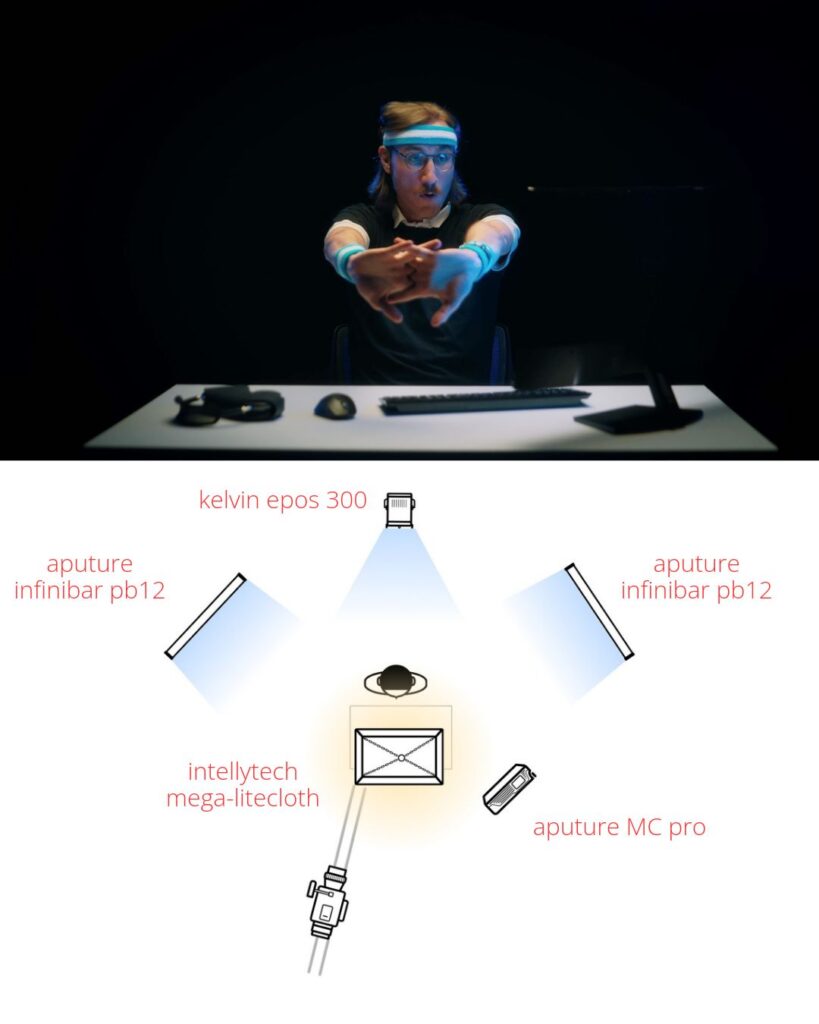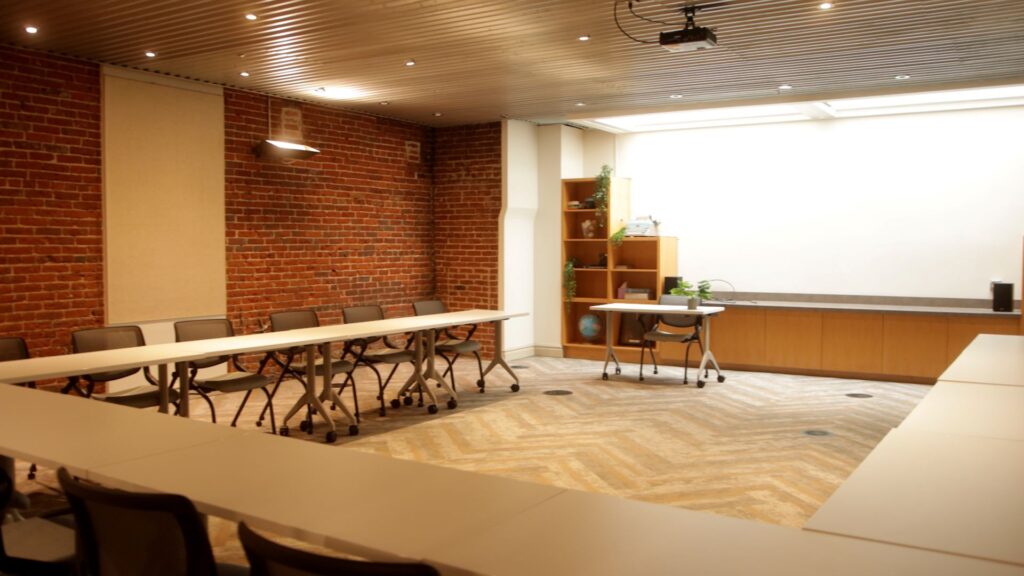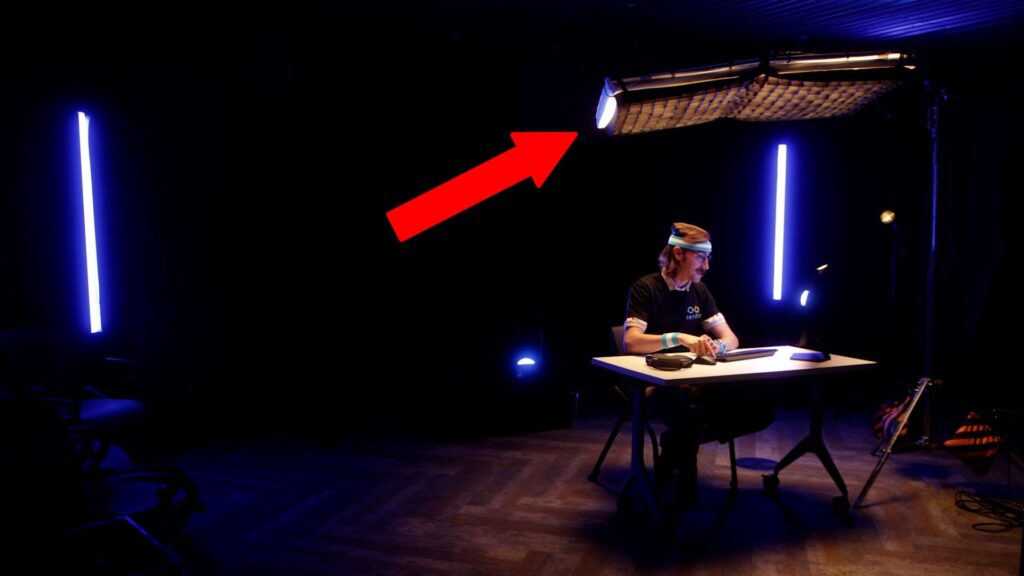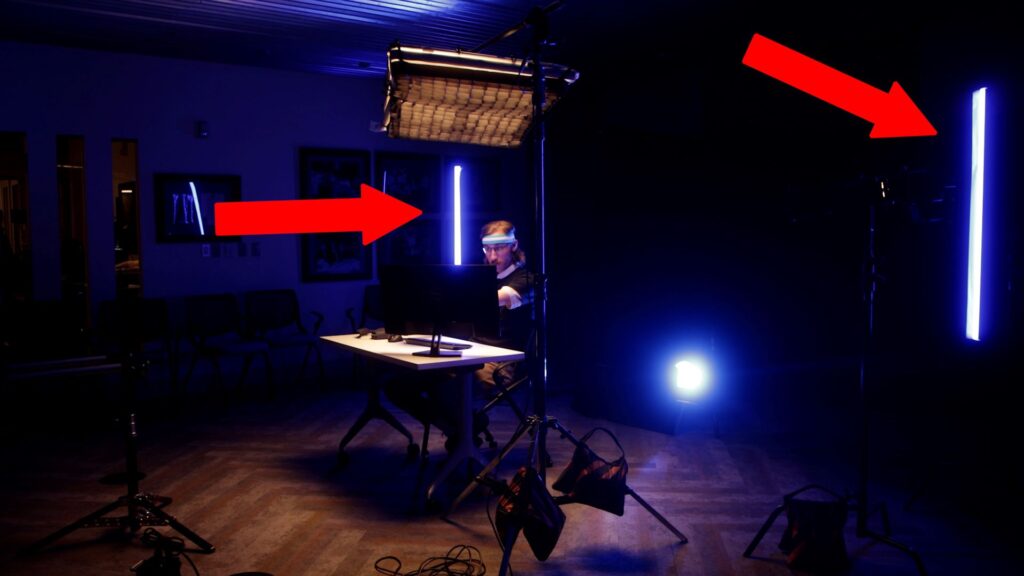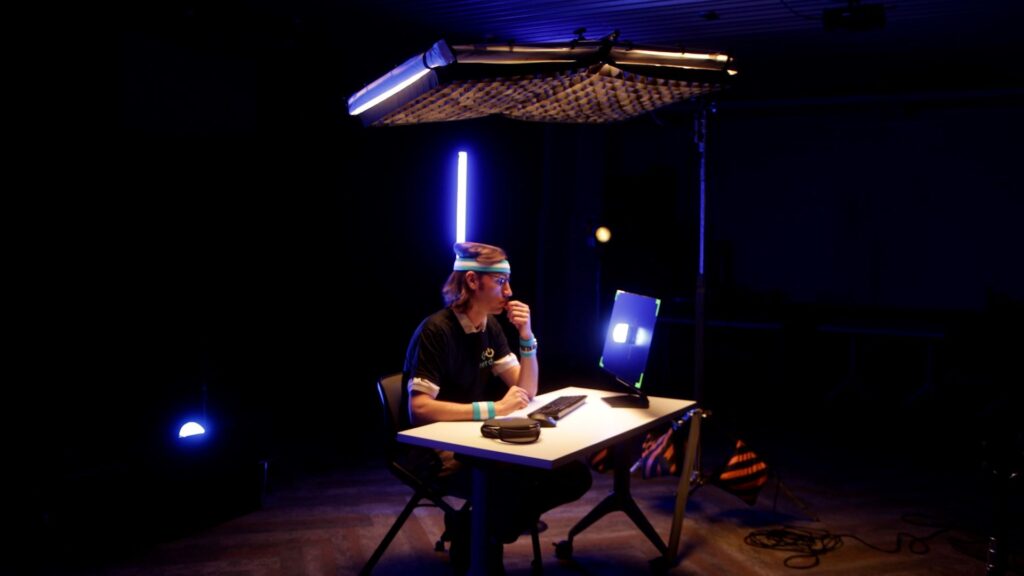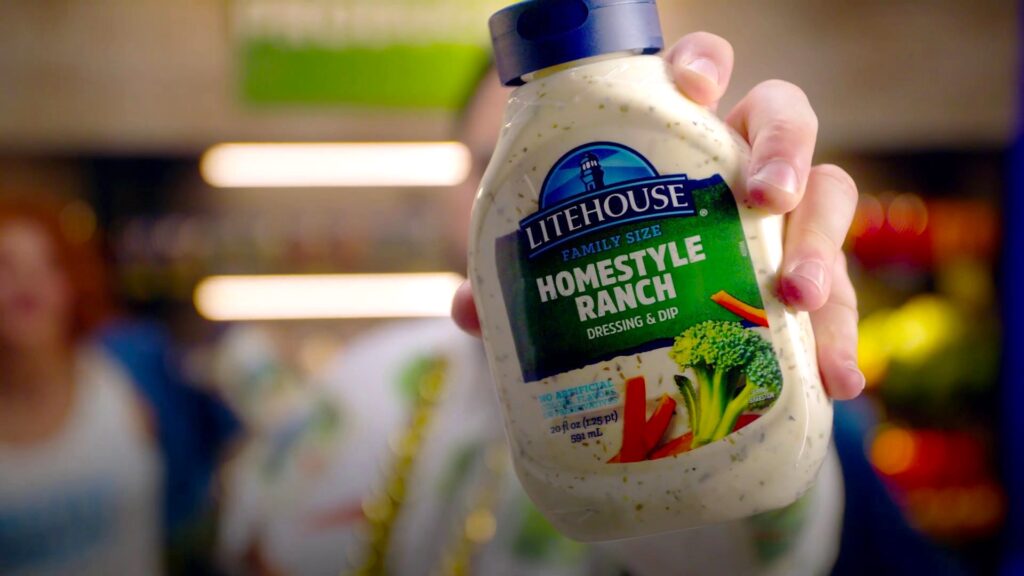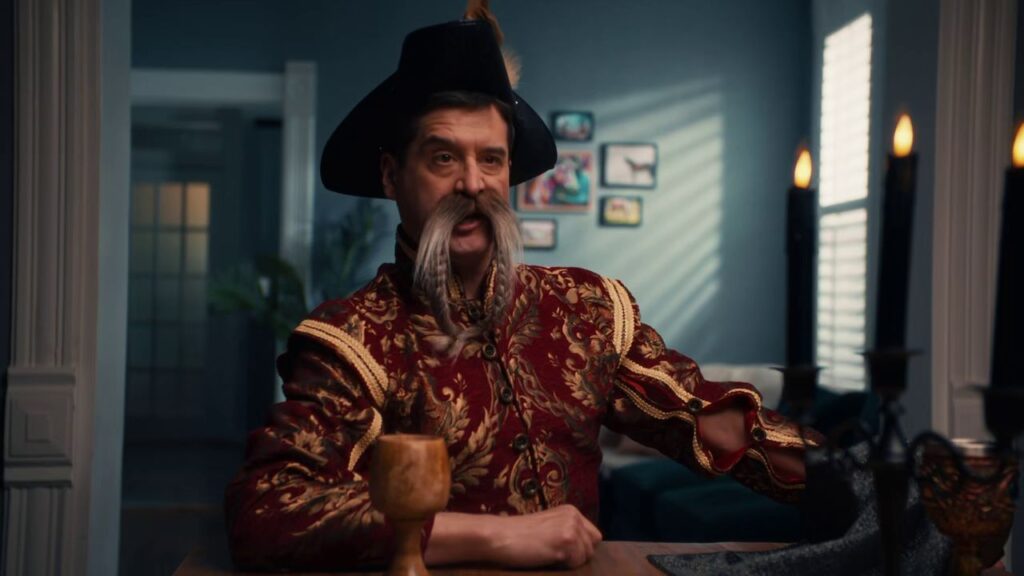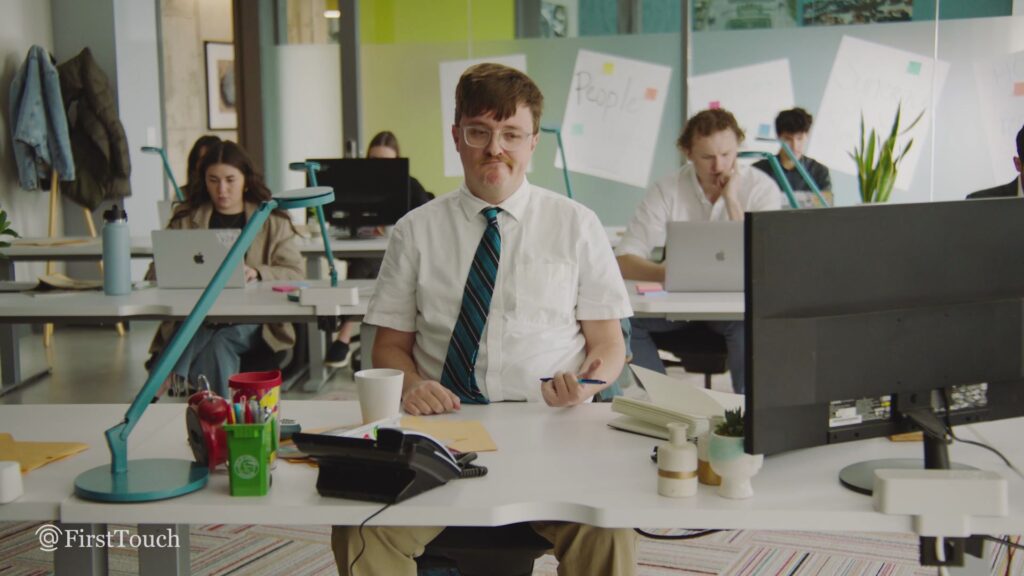case study: nerdio
commercial
client: nerdio agency: small hill films
dir/writer: AJ Campli dp: Bailey T. Miclette
1st ac: Dustin Wheeler 2nd ac: Riley Clinton
gaffer: Tyler Trepod key grip: Teej Morgan
pa: Deanna Schaekel color: Jonny Sirotek
VFX: Casey Webster
select frames
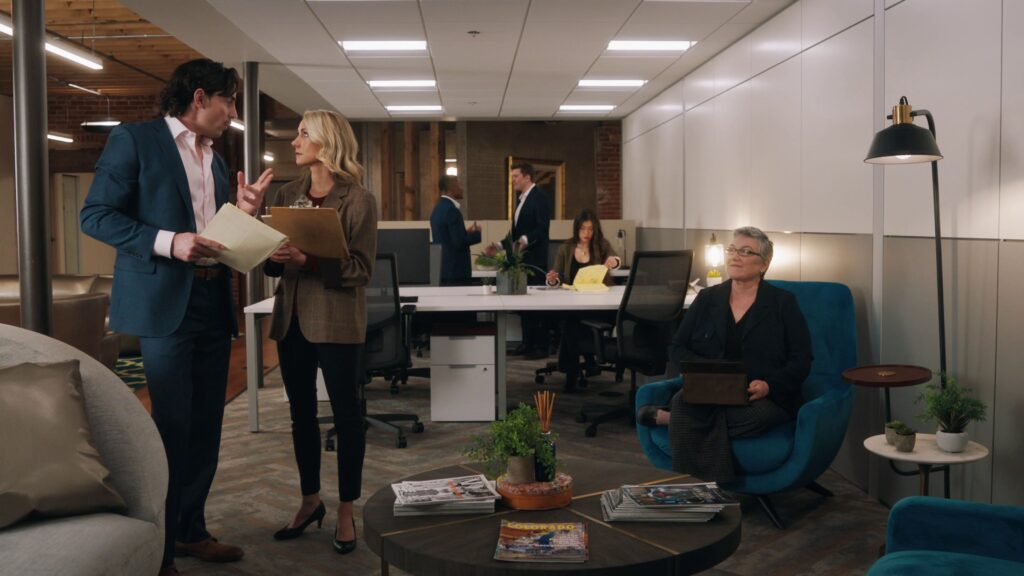
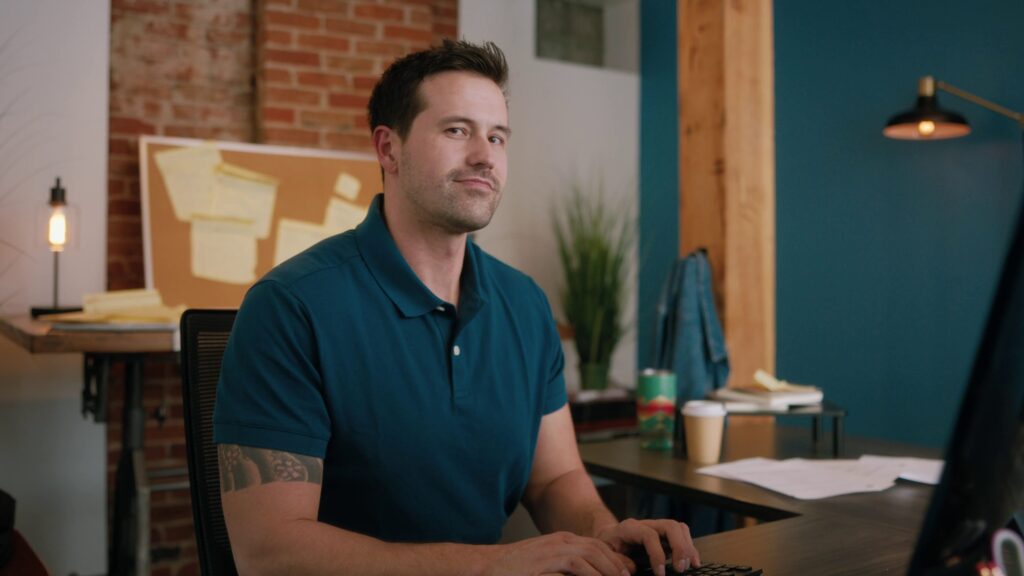
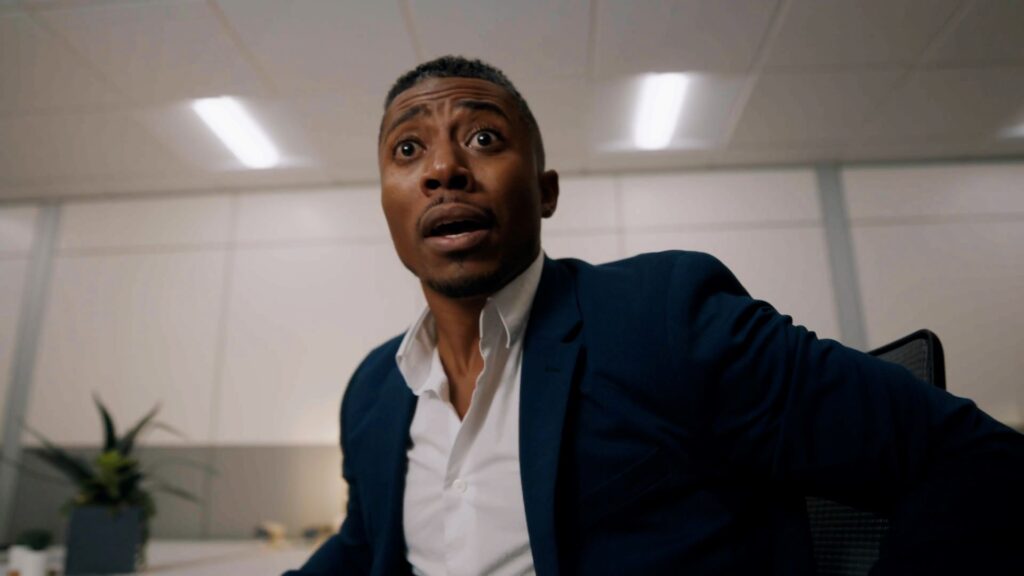
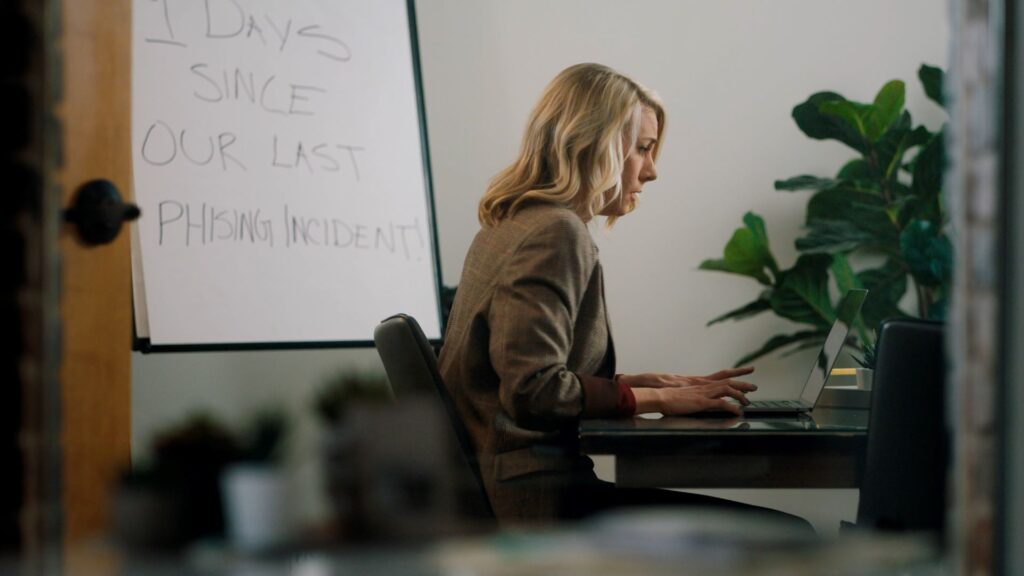
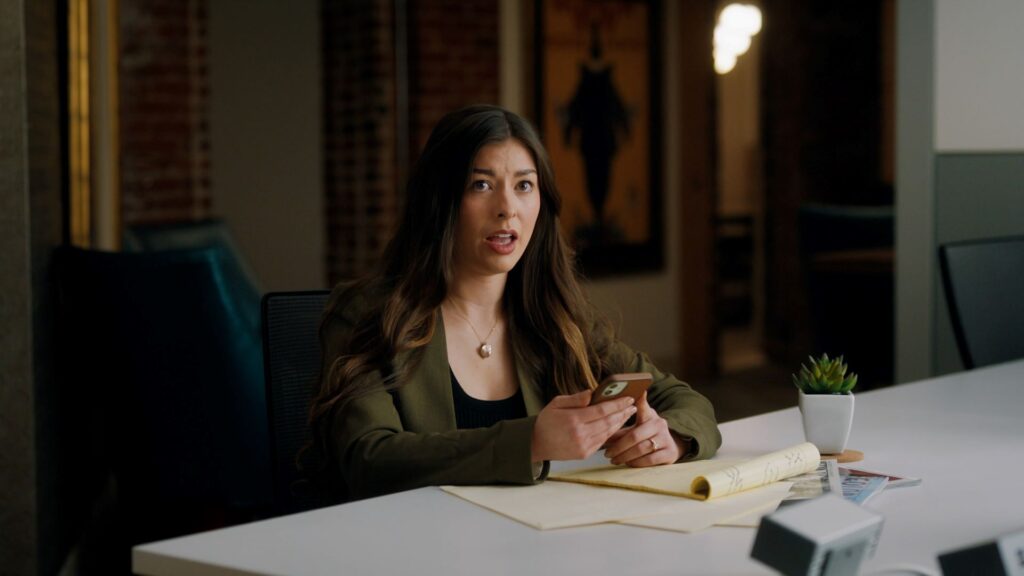
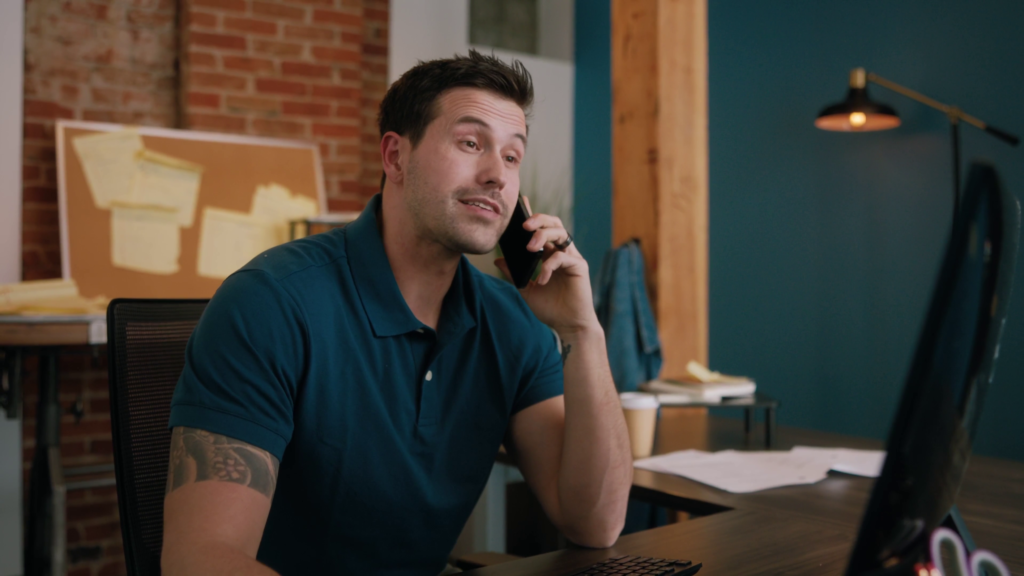
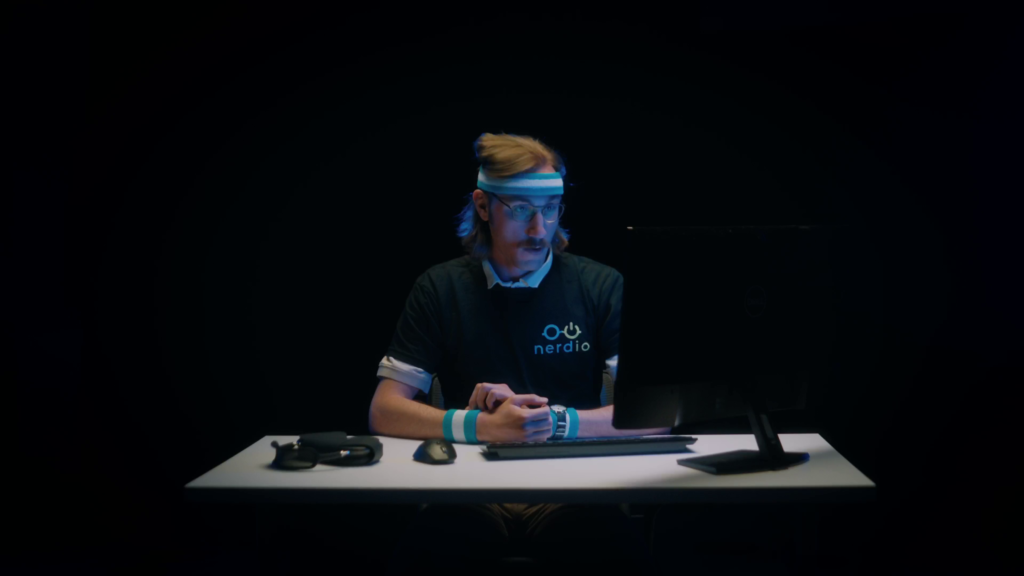
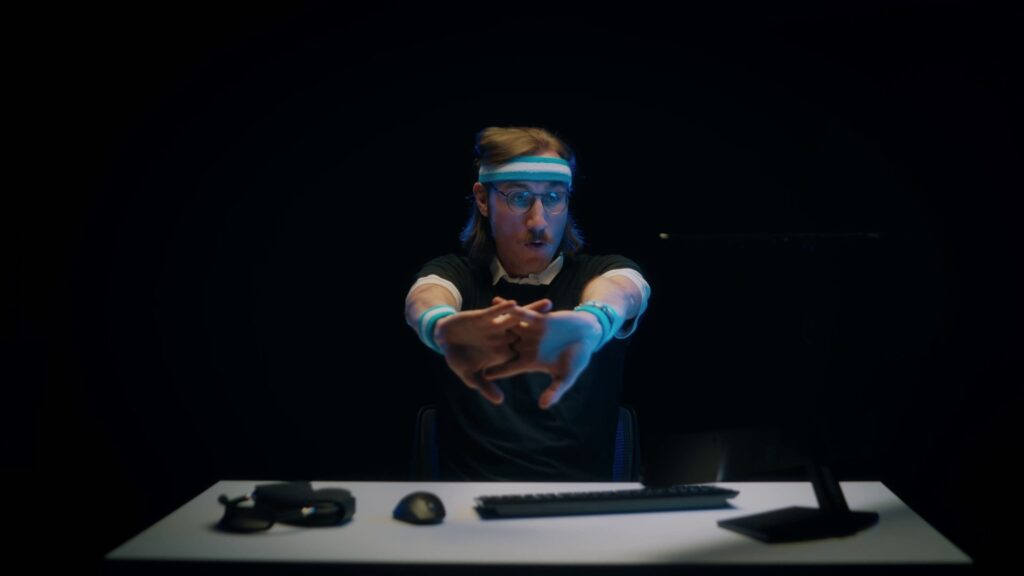
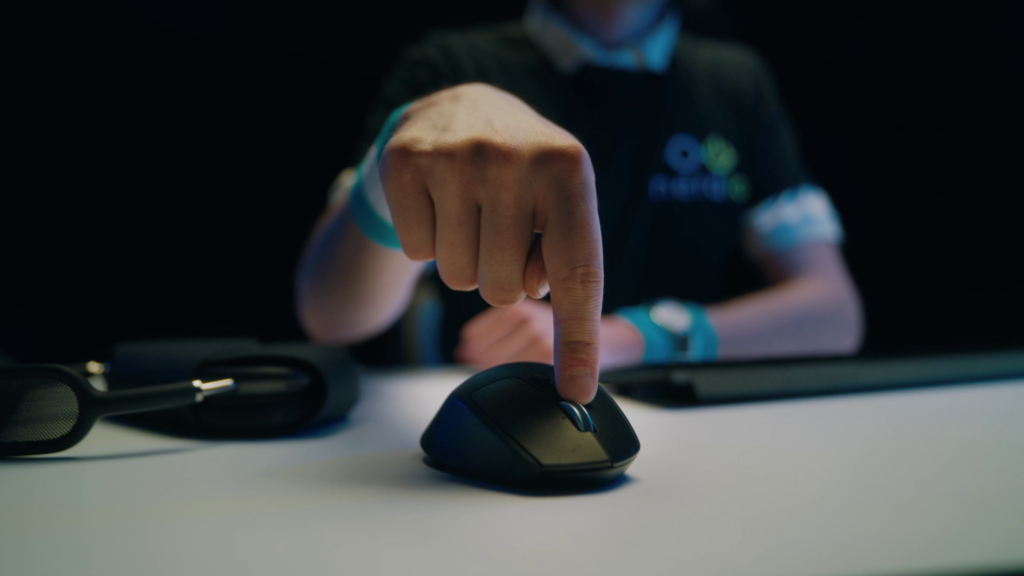
youtube
pre-production
Tyler was approached by director AJ Campli with a unique set of constraints for this commercial:
- one-location
- 6 completely different looks
- 10-hour day maximum
- Keep G&E budget to a minimum by re-purposing the same set of lights for each look
A location scout was arranged, where various setups and looks were tested and decided upon.
To help keep the team under budget, Tyler assembled the following lighting kit:
- Aputure 600d – 600W daylight point source
- Kelvin EPOS 300 – 300W RGB-capable point source
- (2) Aputure Infinibar PB12 – 4′ RGB-capable linear LED’s
- Intellytech Mega-Litecloth – 5×3′ bi-color panel
- Aputure 60x – 60W bi-color point source
This lighting kit was chosen for the following reasons:
The entire G&E kit, including lights, stands, rags, and steel, could be brought to set on one cart. This would save nearly 30 minutes of load-in and load-out time. Also, the total amount of power draw for any one scene needed to fit on one 15A circuit because of power access limitations.
An Aputure 600d with F10 fresnel was chosen as the key over the Aputure 1200d Pro because of two major considerations:
First, there wouldn’t be windows in the background of any of the scenes; meaning the exposure of the talent in the office environment wouldn’t be tied to retaining highlight details in a sunny blue sky.
Second, using an Aputure 1200d would’ve required additional power load management during a fast-paced set day.
The Kelvin EPOS 300 was brought as the other point source because of it’s low rental cost, CCT tuning & accuracy, and RGB capabilities.
The Infinibar kit was brought because linear LEDs have multiple uses, serving mostly as hair lights and practicals in this commercial.
The large size, low height, and included grid of the Intellytech panel greatly reduced setup time during the last scene of the day.
Lastly, the Aputure 60X is an inexpensive small point-source that can be modified in multiple ways.
After Tyler gave his input to production on planning a shooting schedule that minimized downtime for G&E, it was time to get on set and bring the vision to life!
scene one
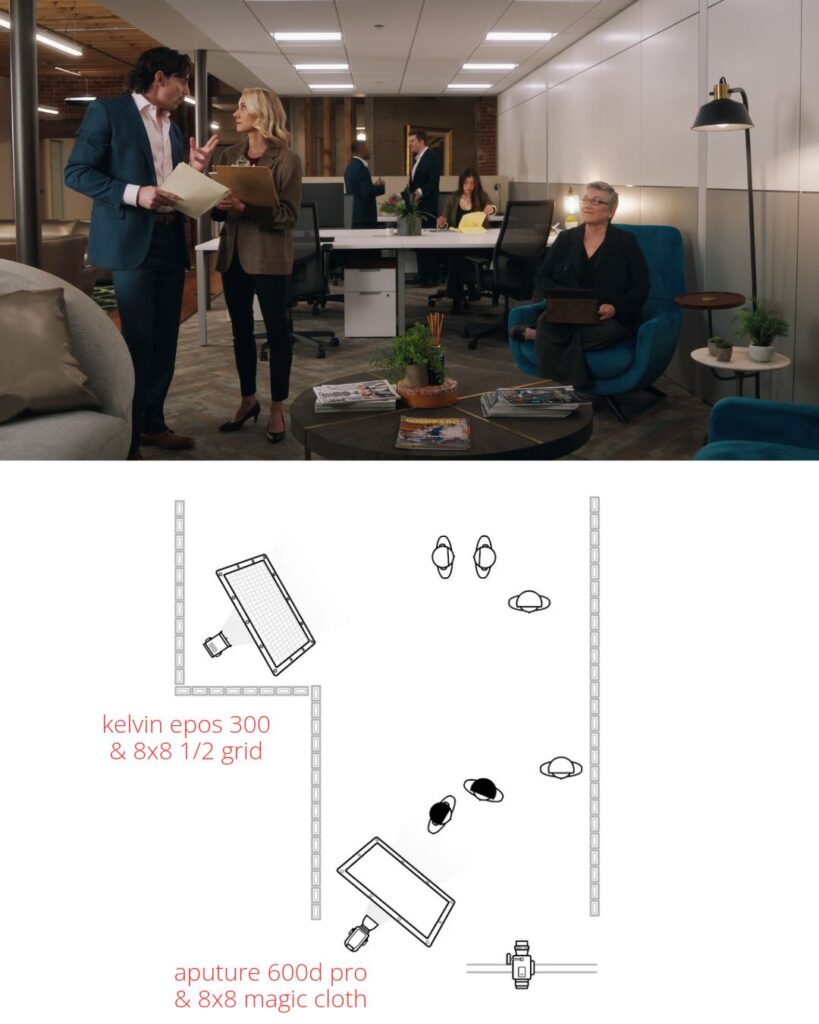
The first shot of both the commercial and the shooting day was a wide of the entire office space. The biggest issue to solve with shooting on such a wide lens was that it didn’t give Tyler any place to hide lights except frame left.
So he applied the adage, “sometimes the best way to make it look like a grocery store, is to leave it lit like a grocery store”, and used the installed overhead lighting and available practicals to fill out the frame. Not having to do a bulb replacement on every light in frame drastically reduced setup time and rental cost.
To draw viewer interest to the foreground talent, and give some left to right shape to them, an 8×8 magic cloth was placed just out of frame on camera left with an Aputure 600d Pro pushing through that.
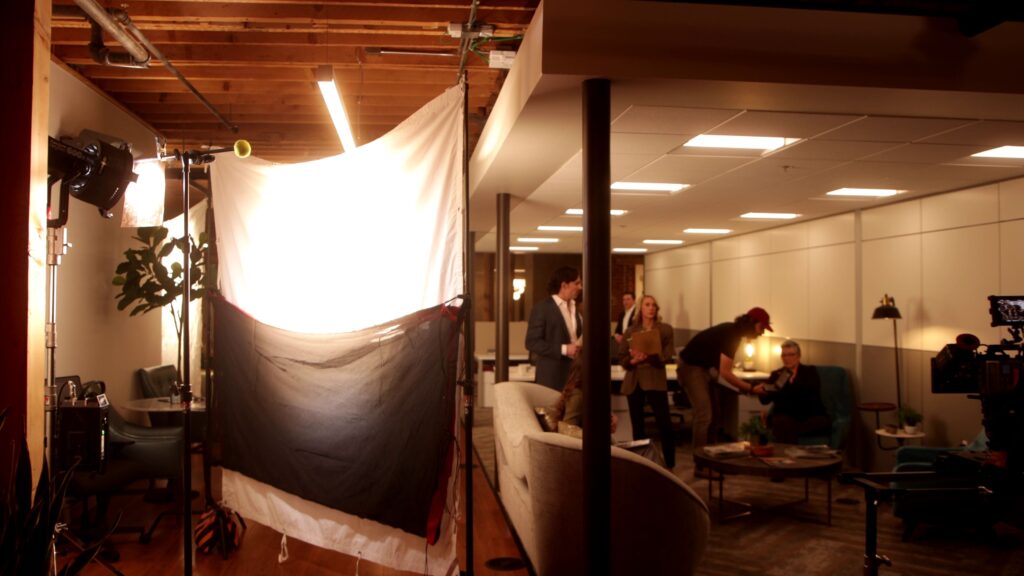
A double net was folded in half and clipped to the bottom half of the 8×8 magic cloth. This was done to reduce the intensity of the back of the couch in the foreground.
Without the double net, the back of the couch would have looked “sourcey”, and given away where the key light was located to the audience.
The Aputure 600d Pro was pushed through a full CTO gel. This helped match the color temperature of the key light to the available office lighting.
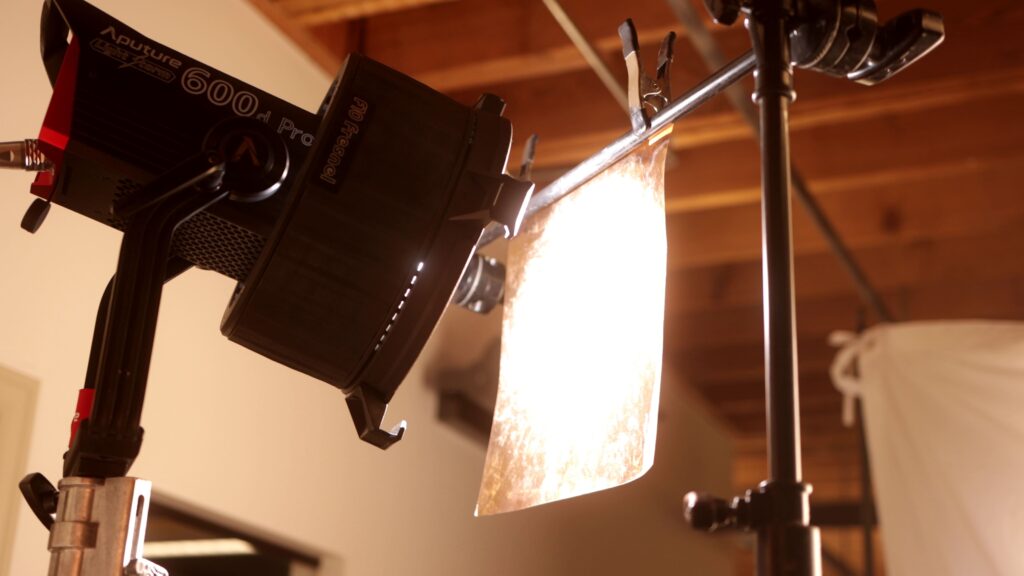
In the back of the room, a Kelvin EPOS 300 was pushed through an 8×8 half-grid to help increase the exposure of the background talent.
Half-grid was chosen because it’s approximately one stop brighter than magic cloth. With the output of the Kelvin EPOS 300 being approximately half that of the Aputure 600d, a one-stop difference in diffusion brings their total output to be approximately equal.
And because the Kelvin EPOS 300 is lighting the talent in the back of the room, a slight reduction in softness between half-grid and Magic Cloth won’t be noticeable to the viewer.
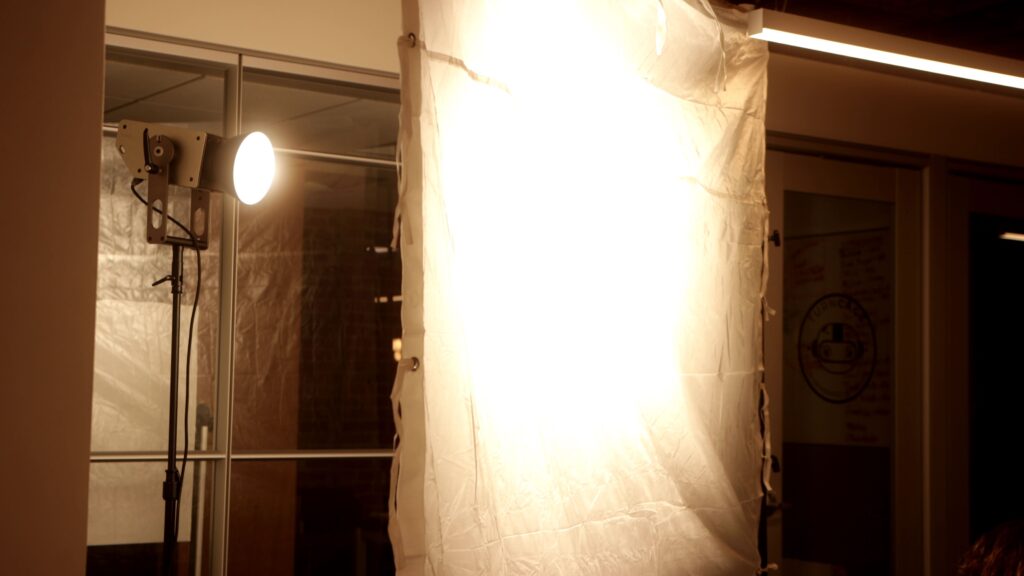
The intensities of each light were adjusted until they felt proper for the space, and the crew began filming.
This setup also happened to be the same look as the last shot, so that was filmed too since the team was already lit for it.
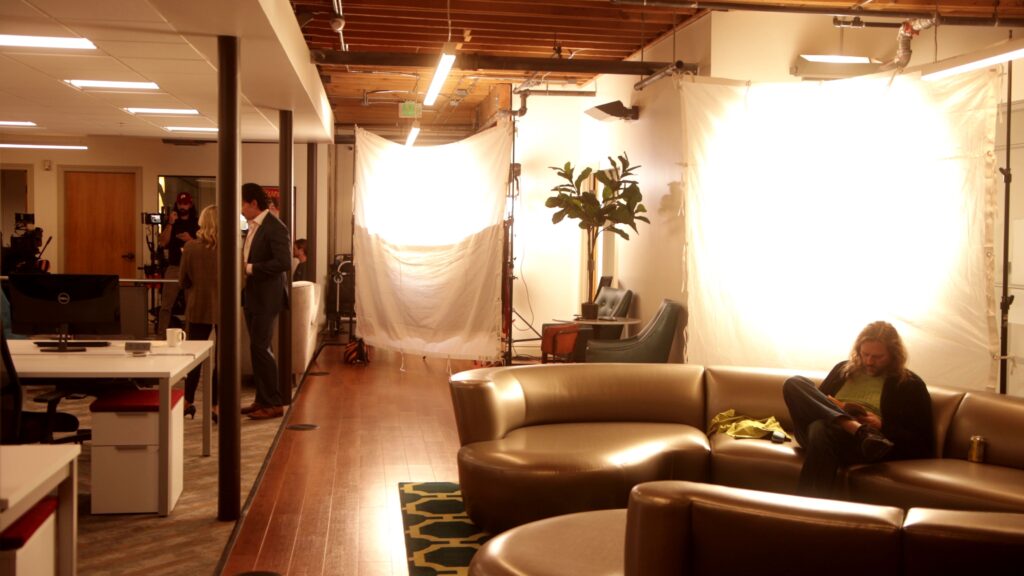
scene two
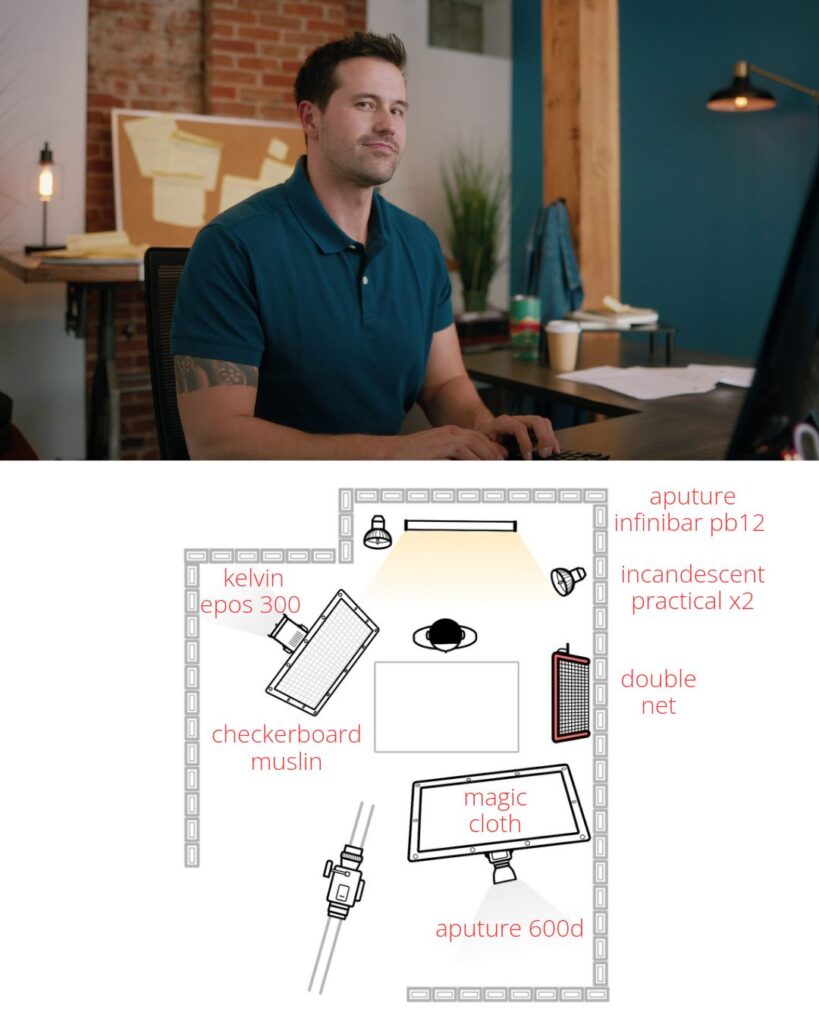
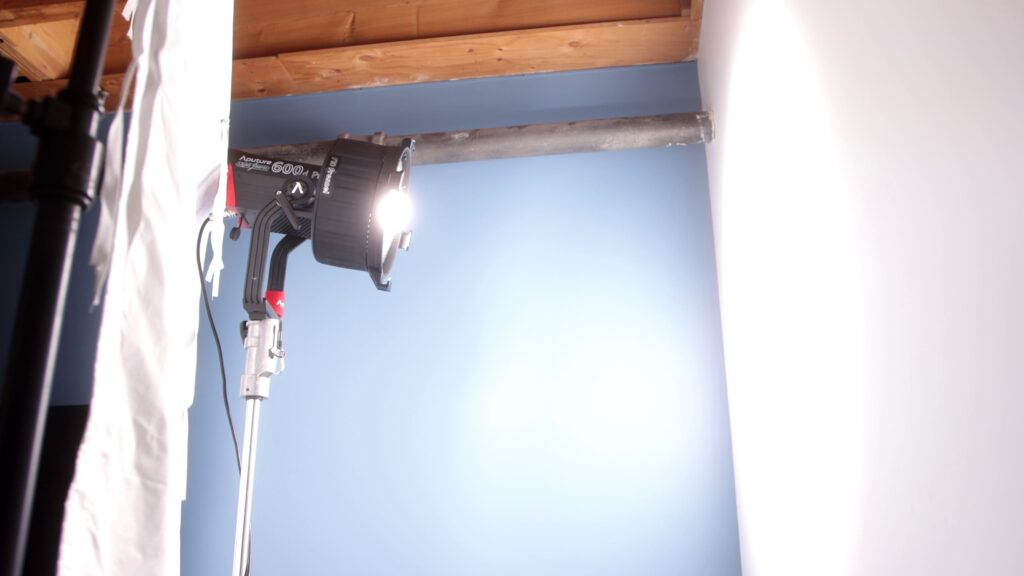
A double-net was folded in half and taped against the wall in front of the 8×8. This reduced the intensity of the wall, which hides the source of the light to the camera.
To help control the ratio between the keyed and shadow sides of the talent, another booklight was added on the fill side. A Kelvin EPOS 300 was bounced off the wall and back through a checkerboard muslin. This gave the DP, Bailey Miclette, the soft, directionless fill he wanted.
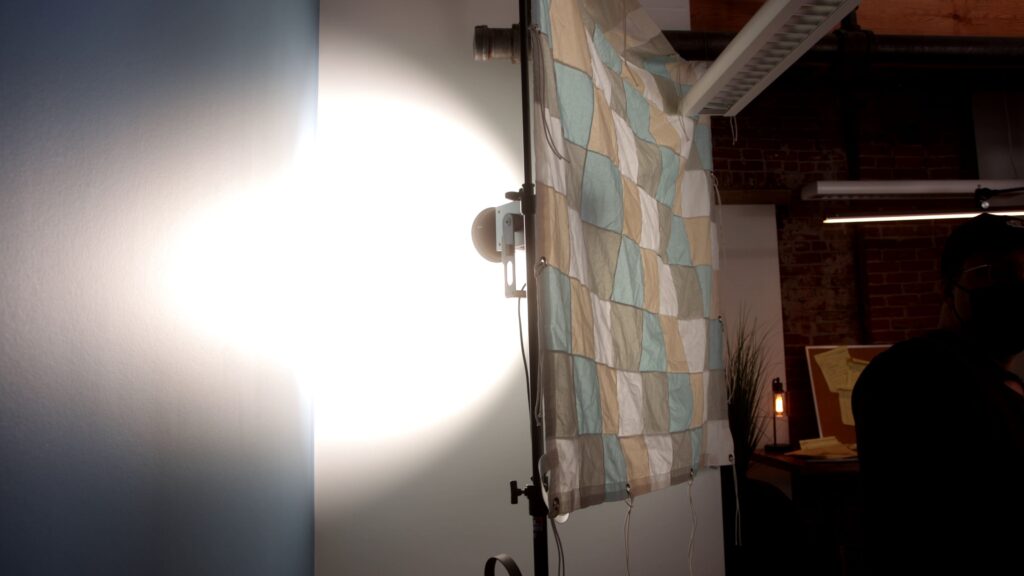
As an aside, Tyler’s a big fan of this checkerboard muslin from the Grip House. It has a warming effect on a daylight balanced light that most DP’s he works with prefer on lighter skin tones, going from 5600 kelvin to about 5000 kelvin.
The checkerboard pattern also more accurately simulates light bouncing in from the exterior environment than bleached or unbleached muslin does.
This is because light doesn’t just shine straight into an office building from the sun. It also bounces off buildings, the concrete, trees, coming in from the clouds, etc.
A checkerboard muslin helps re-create this effect by piecing together several types of muslin into one cloth – day blue, grey, bleached, and unbleached.
To separate the talent from the background, an Aputure Infinibar PB12 was boomed in behind them.
The PB12 was chosen because of it’s light weight, long length, minimal footprint, and ease of rigging.
A piece of tape along the back of it keeps the output from spilling onto the wall, and the wooden pillar here helped hide the stand from camera.
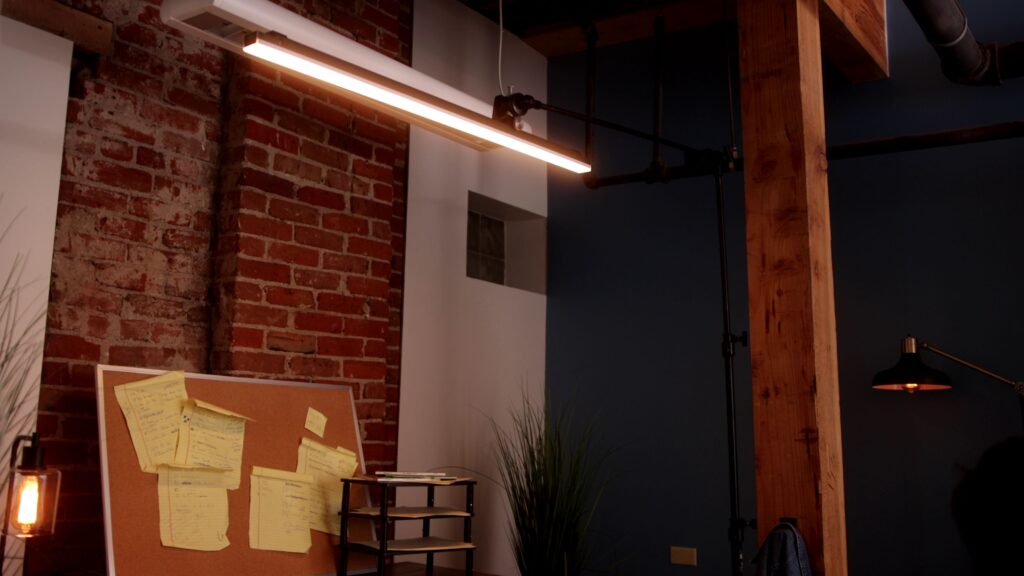
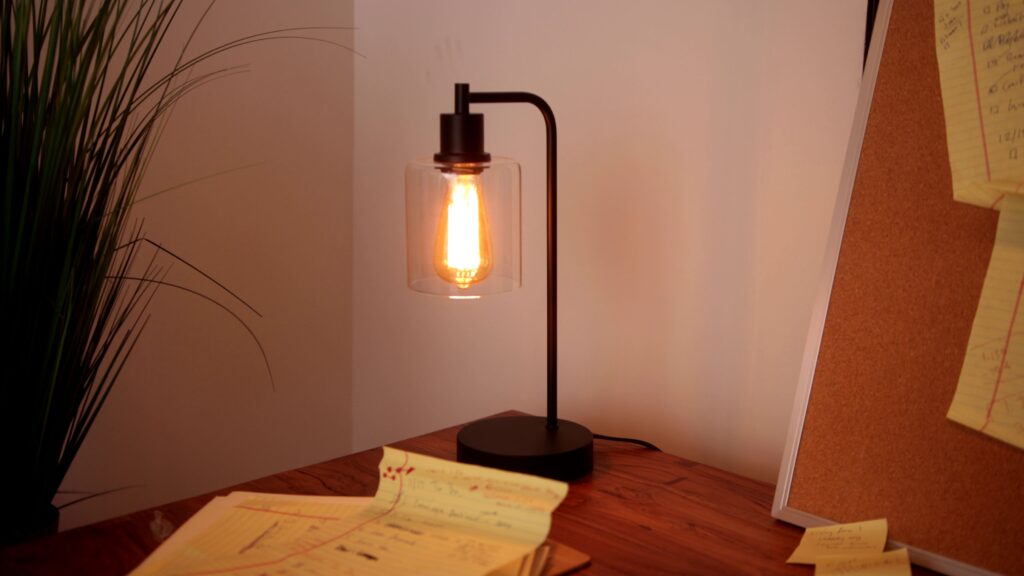
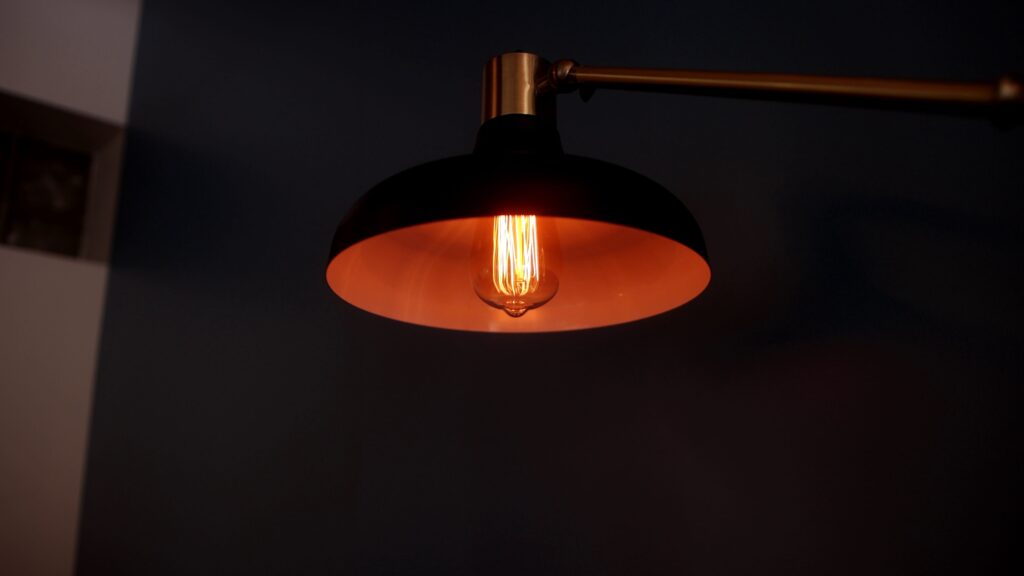
quick cuts



quick cut #1
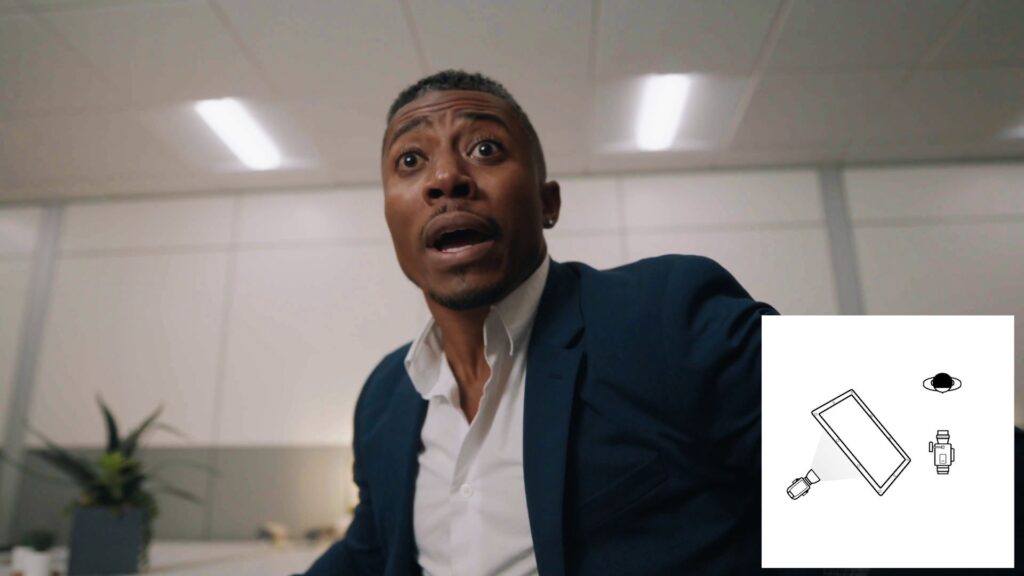
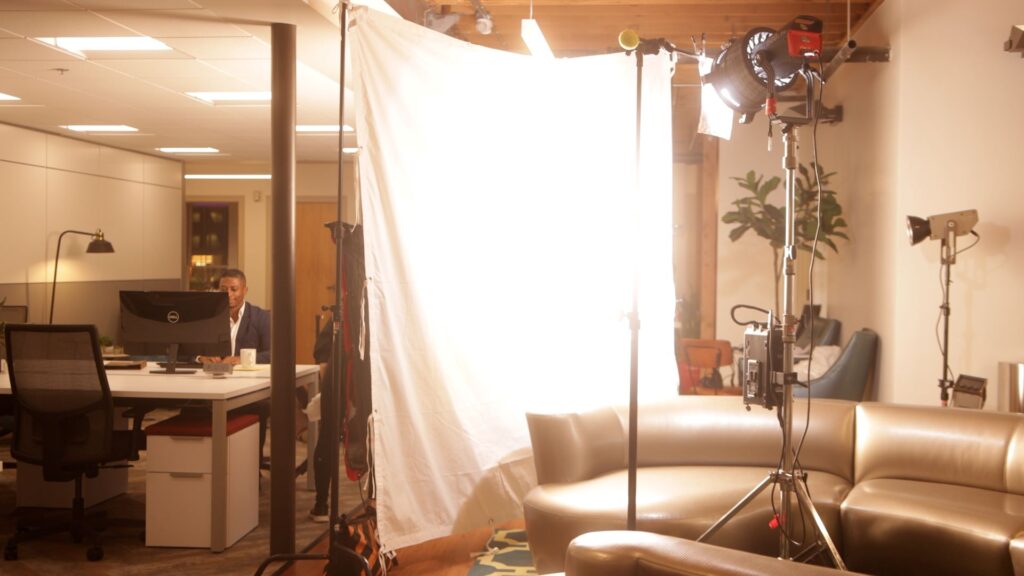
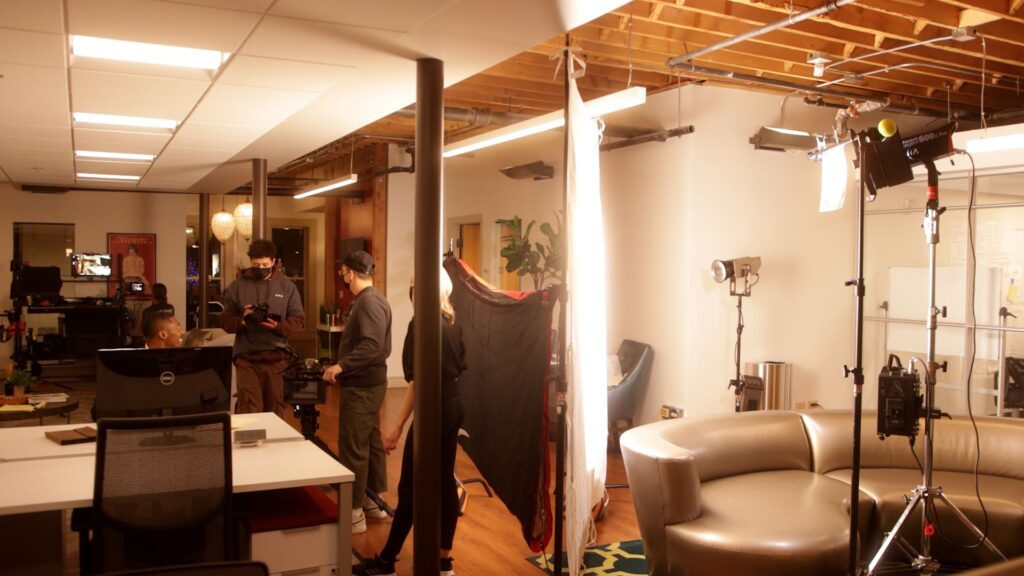
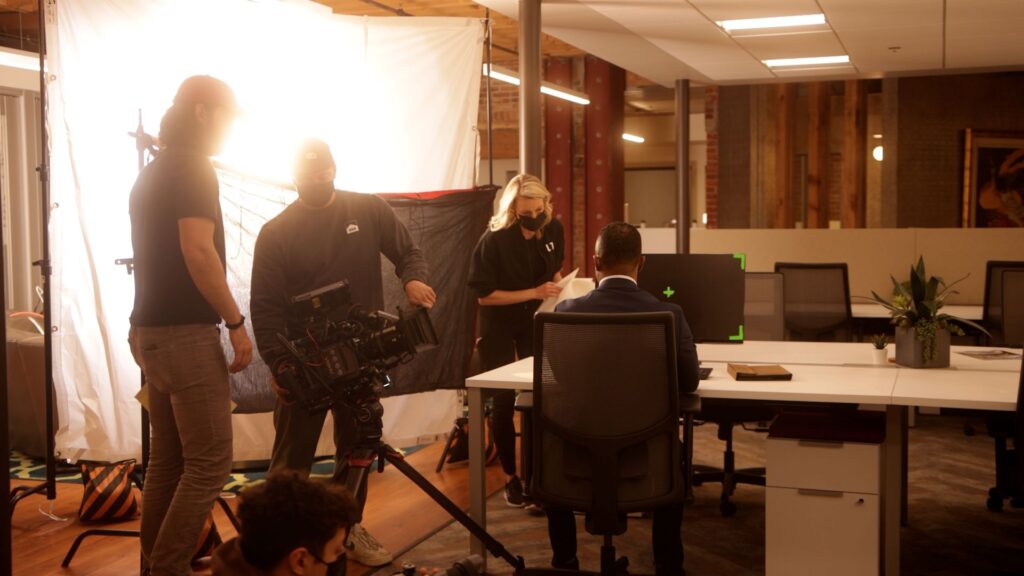
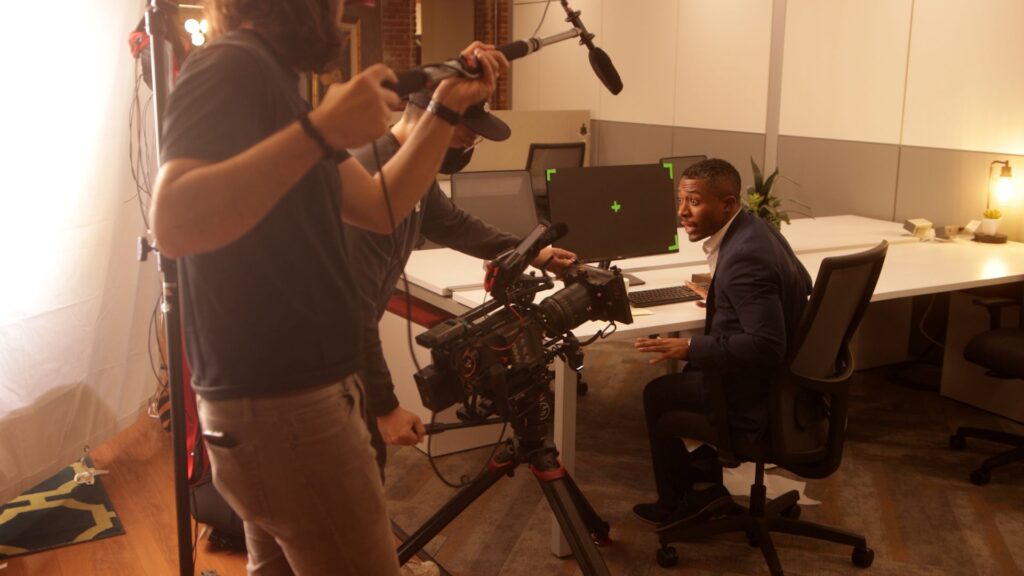
quick cut #2
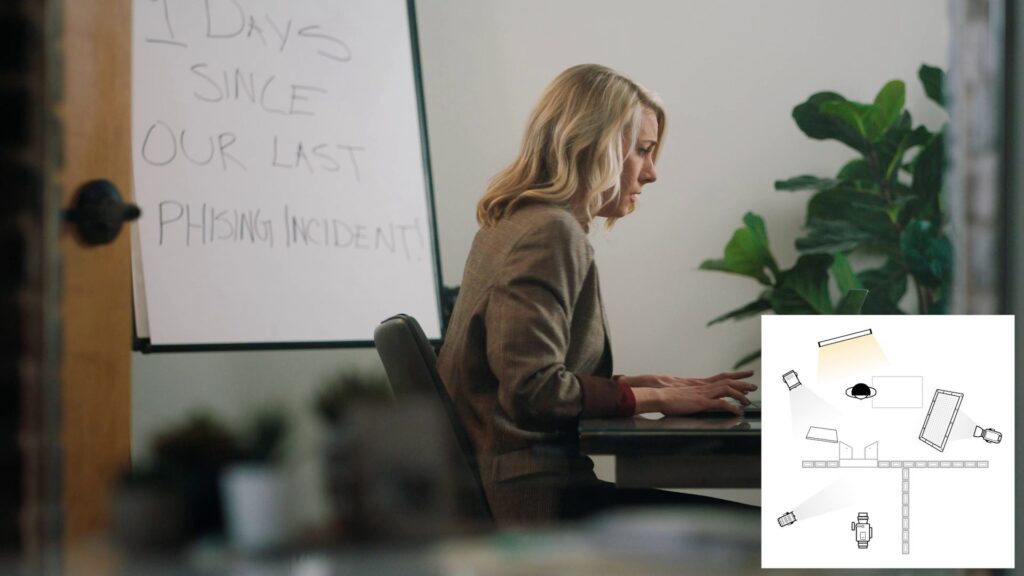
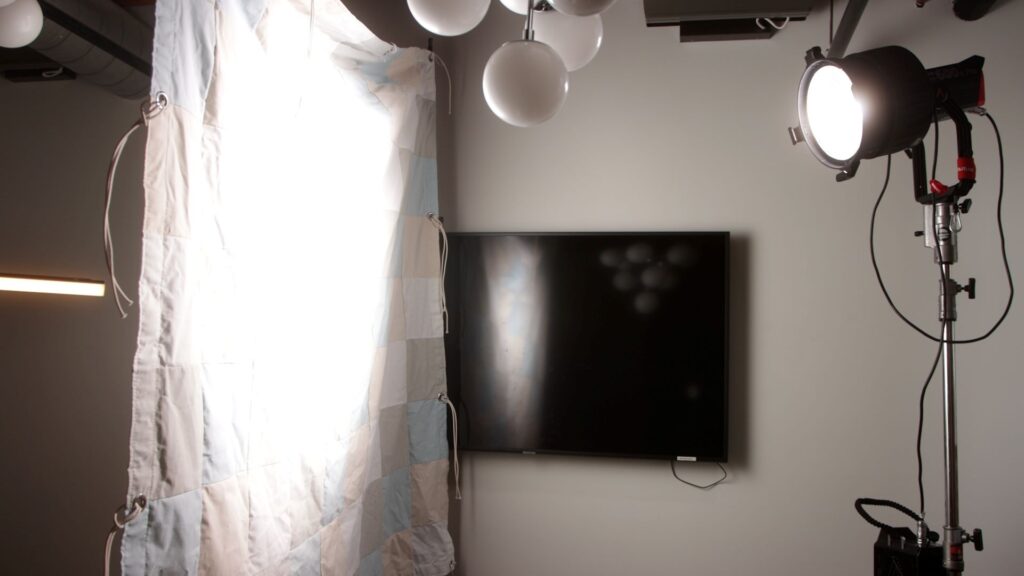
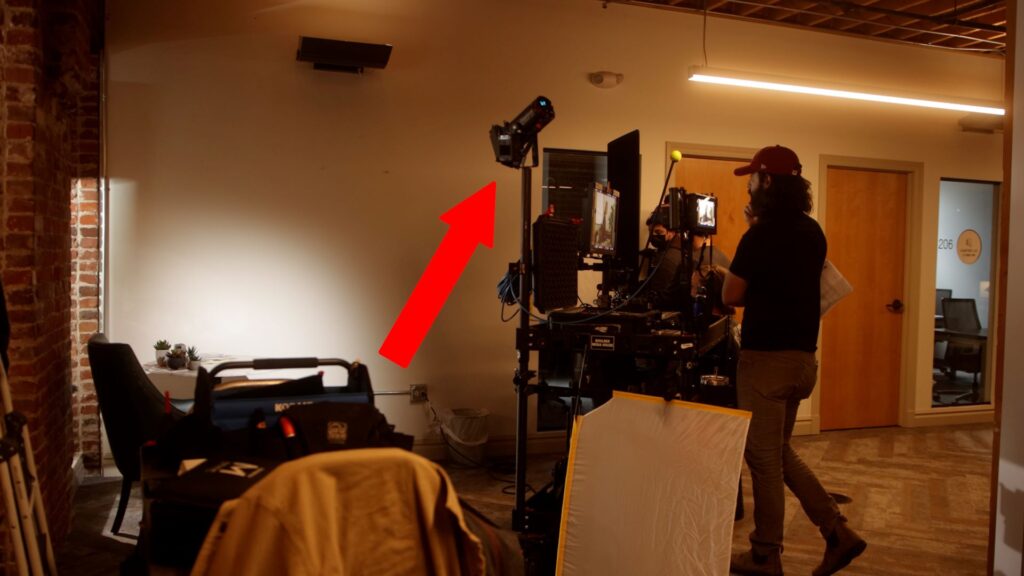
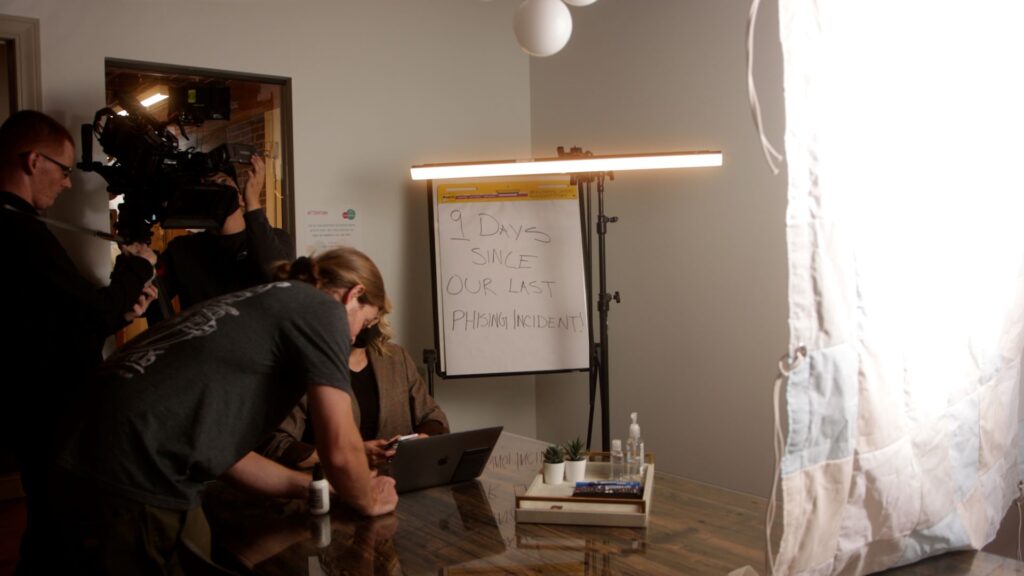
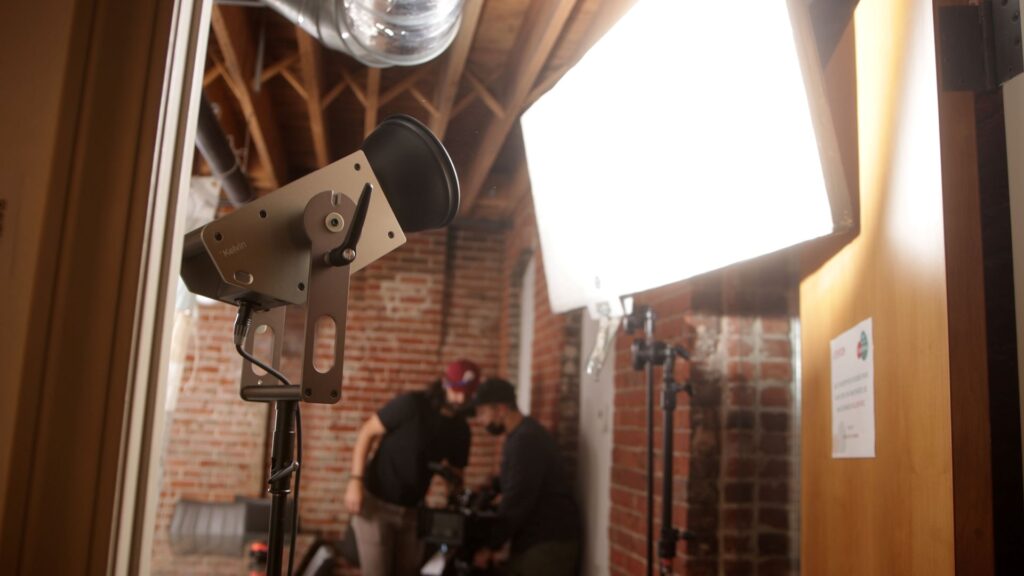
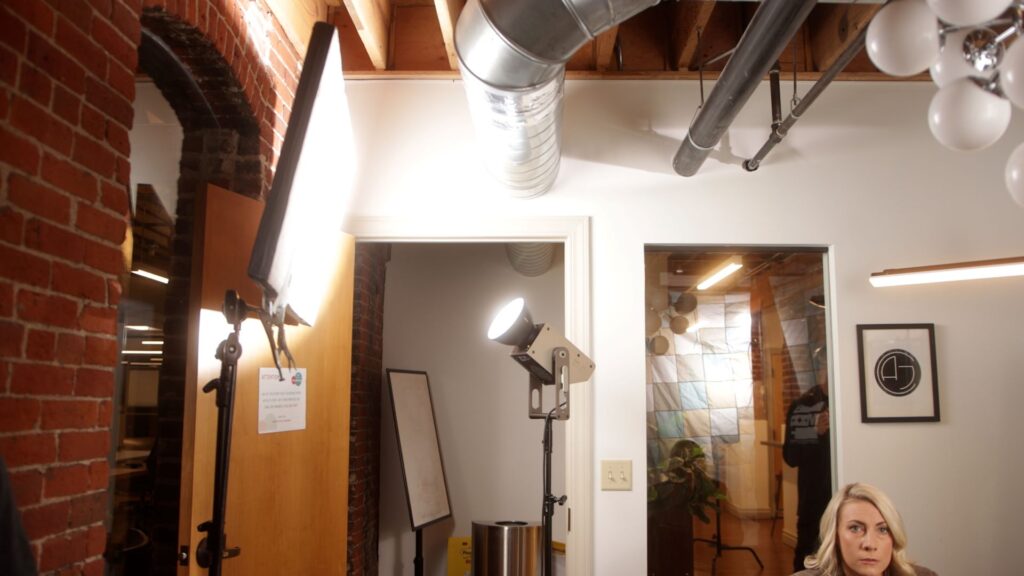
quick cut #3
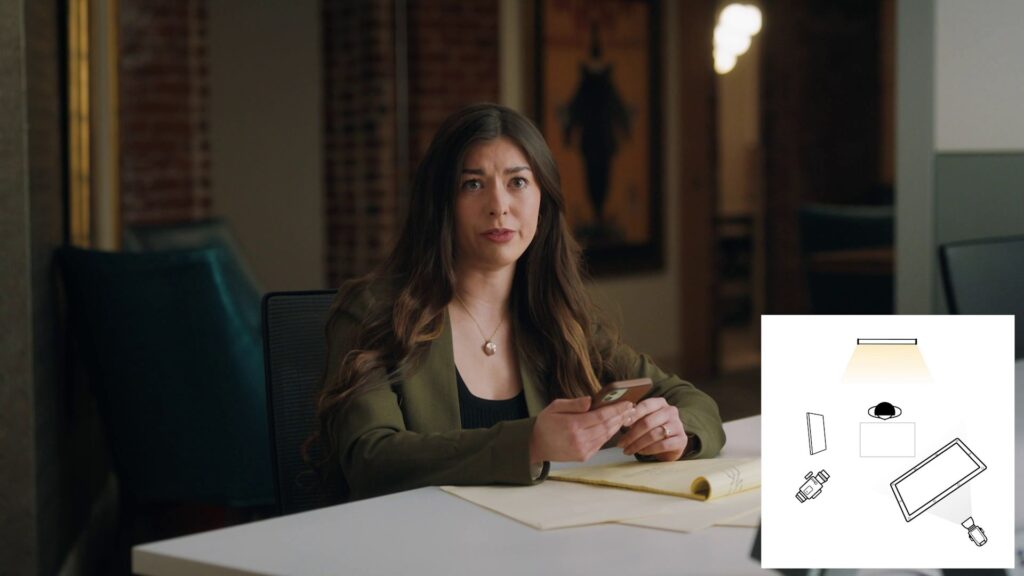
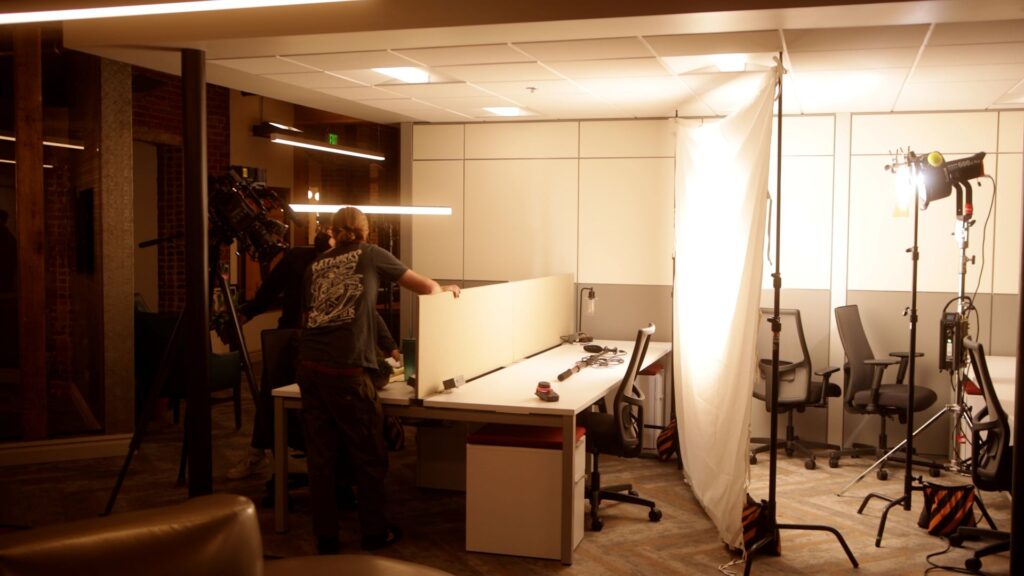
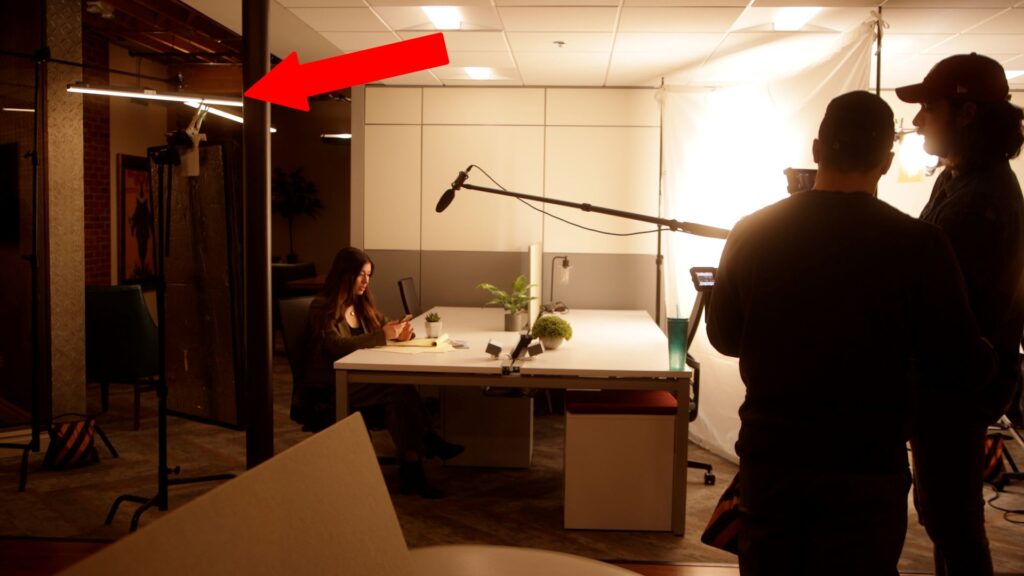
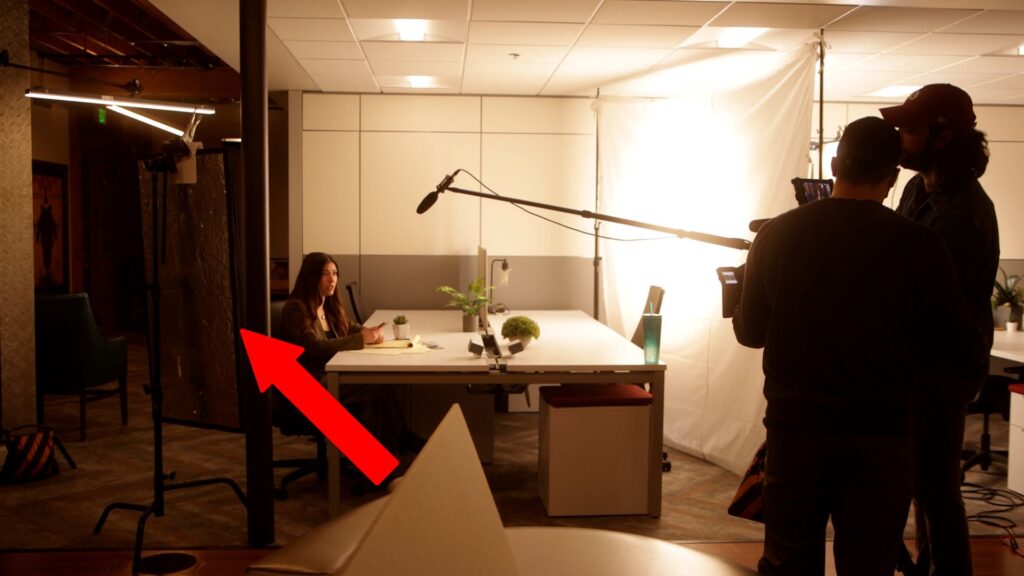
scene three
